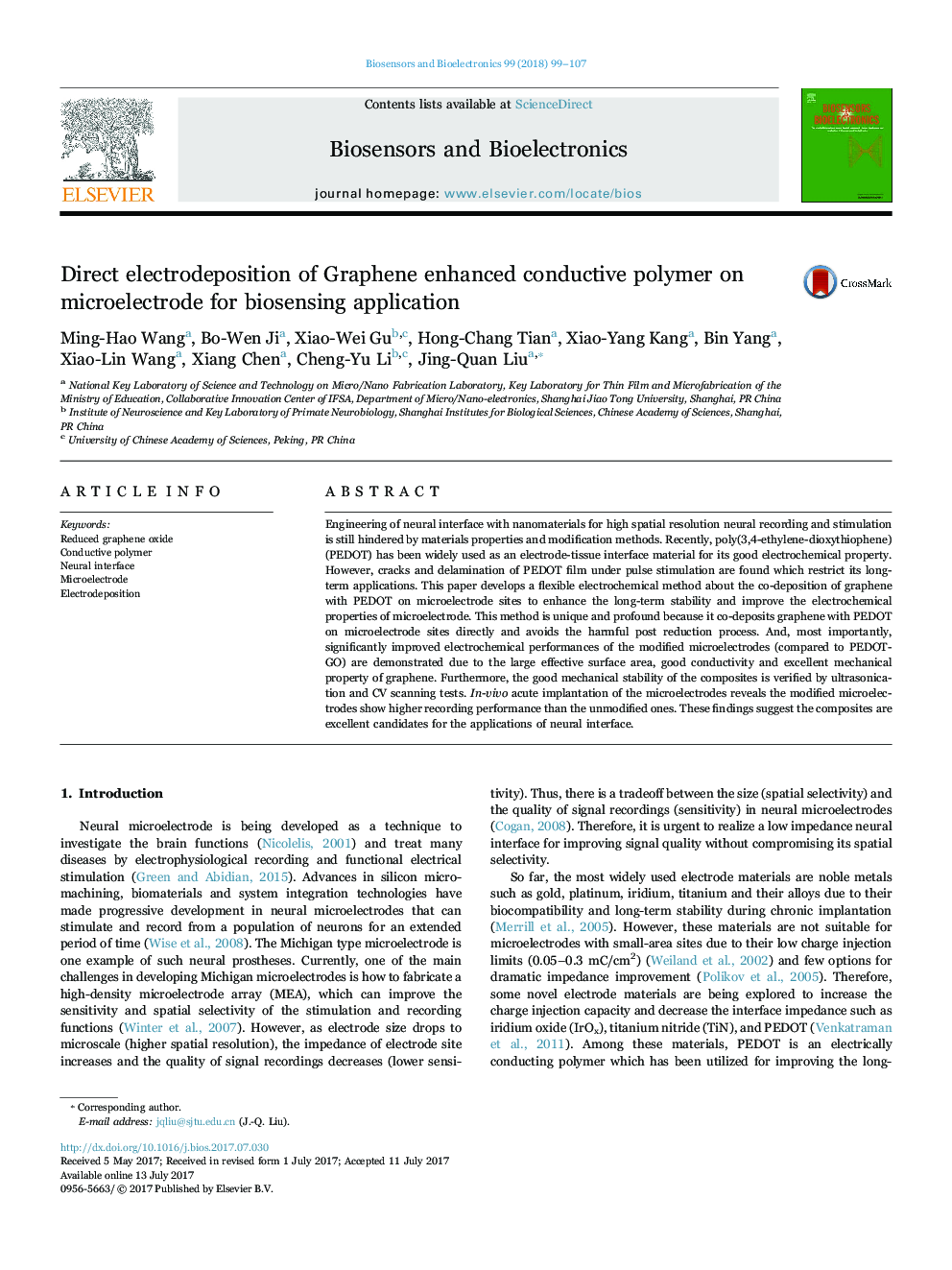| کد مقاله | کد نشریه | سال انتشار | مقاله انگلیسی | نسخه تمام متن |
|---|---|---|---|---|
| 5031318 | 1470933 | 2018 | 9 صفحه PDF | دانلود رایگان |
- A electrochemical method for co-deposition of PEDOT with graphene on microelectrode is proposed.
- The electrochemical performance of PEDOT-graphene modified microelectrode is better than PEDOT-GO modified one.
- A reaction mechanism of the co-deposition was proposed and demonstrated by microstructure observation.
- The good mechanical stability of the PEDOT-graphene was verified by ultrasonication and CV scanning test.
- PEDOT-graphene modified microelectrode recorded higher quality spikes and LFPs than the unmodified one.
Engineering of neural interface with nanomaterials for high spatial resolution neural recording and stimulation is still hindered by materials properties and modification methods. Recently, poly(3,4-ethylene-dioxythiophene) (PEDOT) has been widely used as an electrode-tissue interface material for its good electrochemical property. However, cracks and delamination of PEDOT film under pulse stimulation are found which restrict its long-term applications. This paper develops a flexible electrochemical method about the co-deposition of graphene with PEDOT on microelectrode sites to enhance the long-term stability and improve the electrochemical properties of microelectrode. This method is unique and profound because it co-deposits graphene with PEDOT on microelectrode sites directly and avoids the harmful post reduction process. And, most importantly, significantly improved electrochemical performances of the modified microelectrodes (compared to PEDOT-GO) are demonstrated due to the large effective surface area, good conductivity and excellent mechanical property of graphene. Furthermore, the good mechanical stability of the composites is verified by ultrasonication and CV scanning tests. In-vivo acute implantation of the microelectrodes reveals the modified microelectrodes show higher recording performance than the unmodified ones. These findings suggest the composites are excellent candidates for the applications of neural interface.
Journal: Biosensors and Bioelectronics - Volume 99, 15 January 2018, Pages 99-107
